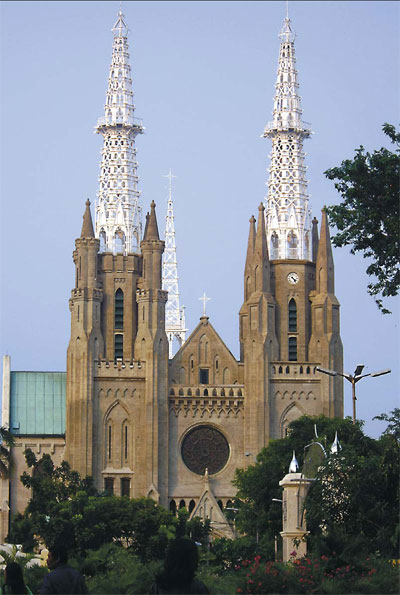Sacred and secular delights
Updated: 2012-08-26 08:02
By Rebecca Lo(China Daily)
|
|||||||
|
The century-old Jakarta Cathedral features warm wood, colorful stained glass and intricate moldings. Photos by Rebecca Lo / For China Daily |
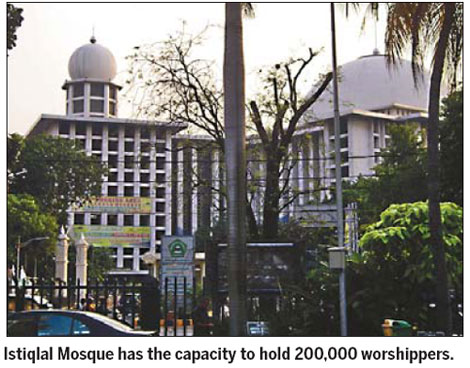
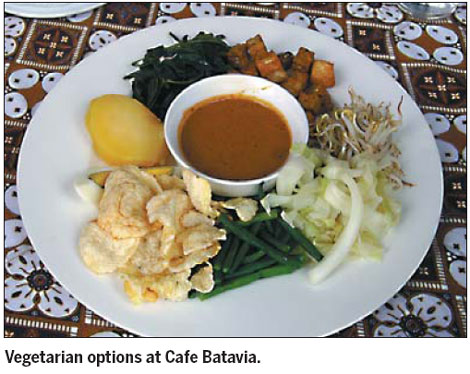
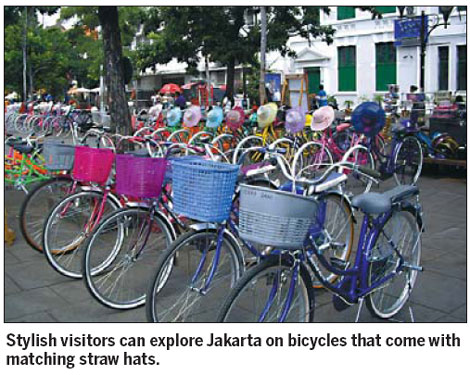
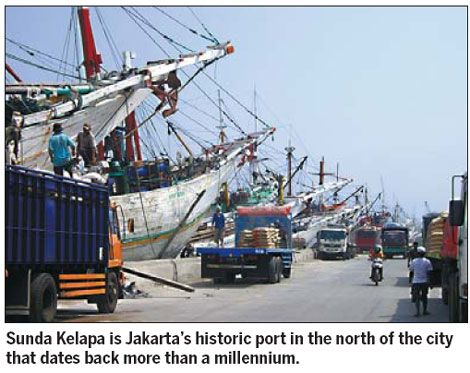
Jakarta's spectacular religious architecture is tempered with the hedonistic pursuits of shopping, good food and blue cocktails. Rebecca Lo enjoys it all.
Suhaemi, my Jakarta Silver Bird taxi driver, once again apologizes for the traffic jam we are stuck in. Although we are only traveling a few kilometers from my hotel, Pullman Central Park, the journey to Istiqlal Mosque takes well over half an hour. It is a typical experience for anyone attempting to navigate the Indonesian capital's city center at any hour during the day.
"Would you like me to wait?" he asks politely, finally depositing me outside the largest mosque in Southeast Asia and third largest in the world.
"I think I can walk," I say, eyeing my next destination across the street: Jakarta Cathedral.
"Best that I wait and then drive you over to the cathedral," Suhaemi insists. "It's very hot today."
I finally agree, since it was a sweltering 33 C in the shade. I make my way inside the imposing concrete structure, where I am immediately greeted by Japyapi, an English-speaking guide who ushers me into a change room to don a bright caftan that covers my arms and hair.
"This mosque has the capacity to hold 200,000 people for prayer," he says. "Some 65,000 people can fit on the ground floor alone. There are five levels. Construction began in 1961 under former Indonesian leader Sukarno and it was completed in 1978.
"Istiqlal means independence and the mosque is a symbol for tolerance. A Protestant architect designed it: Frederich Silaban, from Sumatra. He used a combination of Indonesian marble and Japanese stainless steel. The central dome has a diameter of 45 meters."
Sukarno, Indonesia's first president, handpicked the site to be directly across from the century-old Jakarta Cathedral, although his successor Suharto got the credit for inaugurating it after Sukarno's death in 1970.
While the designer part of me appreciated its international-style architecture tempered with local materials, the mosque is a far cry from grand dames such as Istanbul's Blue Mosque.
It has a detachment about it warmed only by the devotion of its worshippers. Even the stylized cutouts of stainless steel, while looking great in photos, have a Miesian coolness that seems at odds with the nature of their purpose.
In contrast, Jakarta Cathedral is all warm wood, colorful stained glass and intricate moldings. Otherwise known as The Church of Our Lady of Assumption, its present edition was consecrated in 1901 on the same site that an earlier version stood from 1829 until it collapsed in 1890.
Inside, the church chronicles the history of Dutch Roman Catholicism in Indonesia prior to the country's independence, while its Neo-Gothic stone facade is balanced by the lacy airiness of its three white spires. The cathedral, mosque and National Monument nearby in Merdeka Square make up Jakarta's social and religious hub.
By now in need of some sustenance, I head to Batavia for something tall and cool. My friends Mui Yoon, Reggie and Suryani join me and we choose a table in Cafe Batavia overlooking Taman Fatahillah square.
Open in 1993 yet steeped in old-world charm, the sun room where we sit is bathed in natural light and dotted with giant palms surrounding worn cane-backed chairs, making it feel like a private club.
Gazing out the window, I notice that the pink and blue row of bicycles with matching straw hats parked to one side of the square is deserted on a day that is best spent indoors for fear of melting.
While scanning the menu, I am immediately drawn to the Indonesian blue sling as my friends order staples such as gado gado, nasi goreng and soto ayam. My drink is perfect: tall, cool and flavored with blue Curacao - and I ended up having another.
Refreshed and invigorated, we head to Sunda Kelapa, Jakarta's historic port dating back more than a millennium in the north of the city.
It is a busy hive of activity, with workers loading and unloading cargo as diverse as Hondas, rice, cement and fertilizer bound for distant shores. Mostly consisting of three mast sailboats, the ships bring back animal feed from abroad for Indonesia's livestock.
We next hit Sarinah, a department store known for its wide selection of batiks. As soon as I stepped inside, I knew that my credit card would be put to the test.
The riot of colors and patterns are somewhat overwhelming, but I persevered and bought myself a fun laptop case in shades of ochre and mustard. I also found a lovely white blouse with floral piping and a small silk rug that would be perfect beside my bed for cold feet early in the mornings.
I then rush off to meet with Zico Hansakarya and Trihatma Haliman of Central Park. We decide to have coffee at Nanny's Pavilion in Central Park's mall - a fun place with mock swings and the most delicious glass of iced coffee caramel I had ever tasted.
Zico explains that Central Park is just one component of Podomoro City, a 22-hectare mixed-use site with five components: shopping mall, hotel, residences, office tower and Tribeca Park. The latter contains a large open space that acts like an urban garden for public gatherings such as concerts or events.

"Jakarta has limited land and we envision Podomoro City as a city within the city," Zico says. "We are capitalizing on the synergy between all its different components. We have plans to take this model to other parts of Indonesia. As a high-rise developer founded in 1969, we already have many developments throughout Jakarta."
After saying goodbye to Suryani and Mui Yoon, Reggie and I cab it to Oasis.
One of Jakarta's destination dining hotspots, it dishes up rijsttafel, a traditional Indonesian procession of dishes each served by a smiling woman.
Rijsttafel was originally served on plantations, at parties and other formal occasions. Our candlelit dinner includes being serenaded by troubadours as we feast on fish, lamb stewed in coconut milk, and satays.
The restaurant offers an outdoor sculpture garden for those who wish to stroll in between courses, but we were content to sip our wine and congratulate ourselves on a fitting end to a memorable trip.
Contact the writer at sundayed@chinadaily.com.cn.
(China Daily 08/26/2012 page16)
